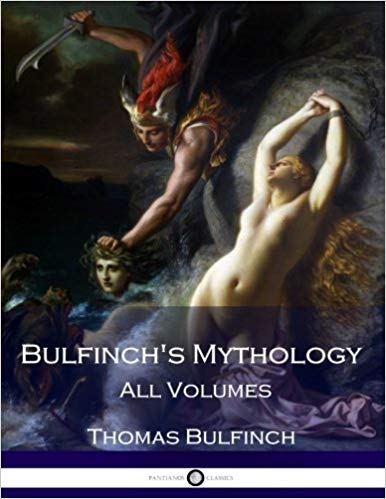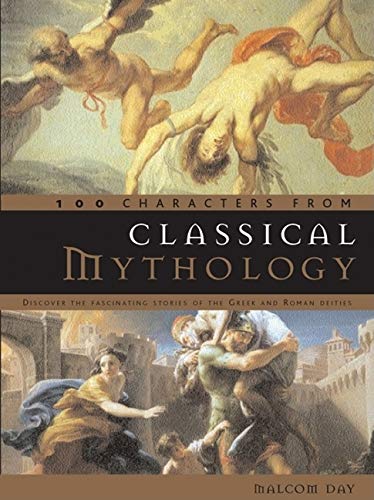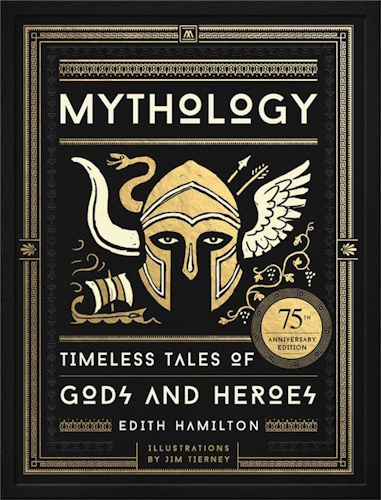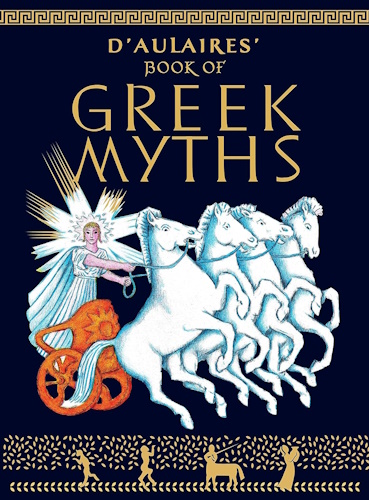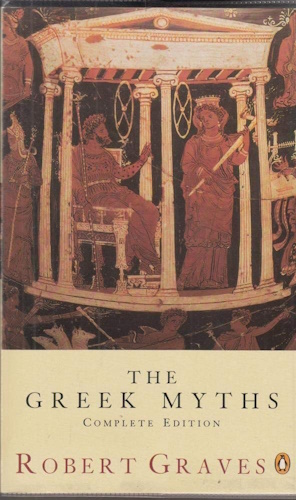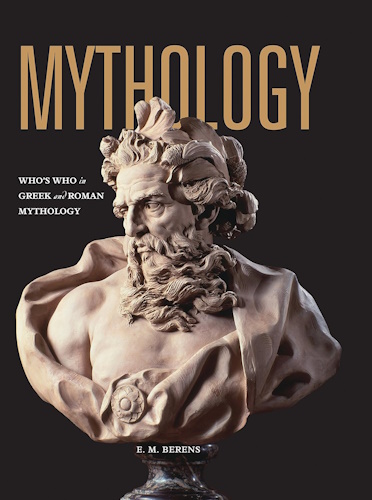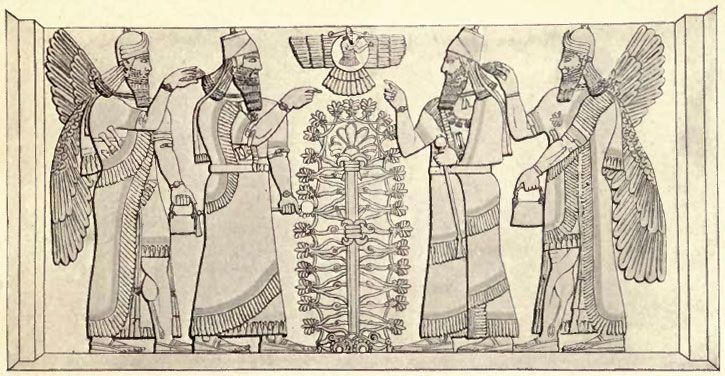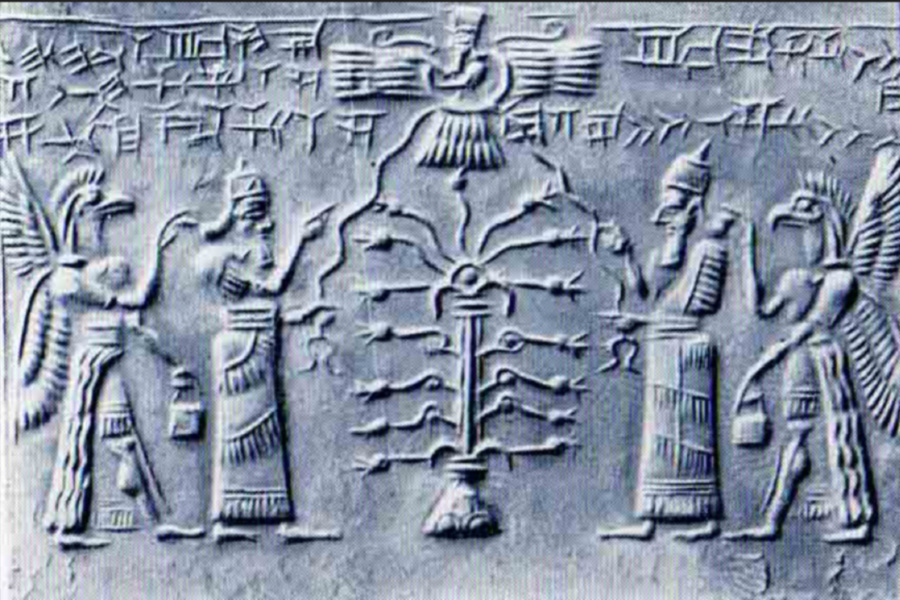![]()
'Nemesis'
Follow the history of the word
odd..."coincidences" in myths?
Posted by Germanbini on March 29, 2010
![]()
Thanks to Andrew Veresay for the post on the news story regarding the planet Nemesis. I had previously heard this term applied to the brown dwarf before, and thought I'd try to research a bit more online to find out more about it. The following post may cast some interesting theories on the history of the planet Nemesis. I think there is a lot of ancient mythology that has clues regarding astronomy and past events that have grown into stories over the millenniums.
Wikipedia article on Nemesis. From that page link I've clicked on various other Wikipedia links to get the following paragraphs of information (Italic is what was quoted, plain text and bolding is by me for emphasis):
A Greek poet wrote: The poet Mesomedes wrote a hymn to Nemesis in the early 2nd century CE, where he addressed her, 'Nemesis, winged balancer of life, dark-faced goddess, daughter of Justice...'
Hmmm... Dark faced and winged?
Nemesis rides in a chariot drawn by griffins. Following the link to griffins, there is this picture...
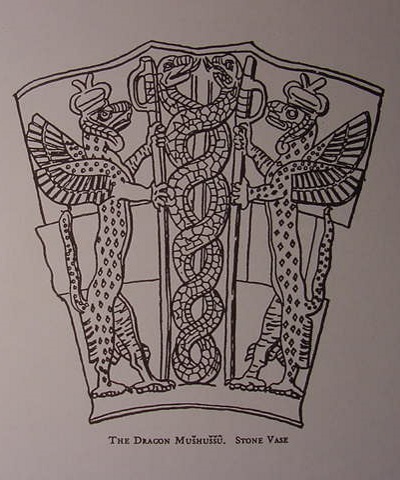
A very early appearance of gryphons, dating from before 2000 BCE, two of them shown in company with the Sumerian deity Ningishzida. Seems familiar!
I learned, presided over the Tara assembly as the sun god Fin,
a Druid in strangely flowered garments,
and with a double-pointed headdress and bearing in his
hand a book. Fin's two-headed miter of fishy form (a
play on 'fin'), his upright rod, spotted or checkered garment and
basket in hand, are symbols that are easily recognizable in the
Sumerian depiction of Enki presented here:
His column (i, eye) or pillar of Tara ('enlightenment') is remembered as the
Tree of the Wisdom of Life of numerous traditions.
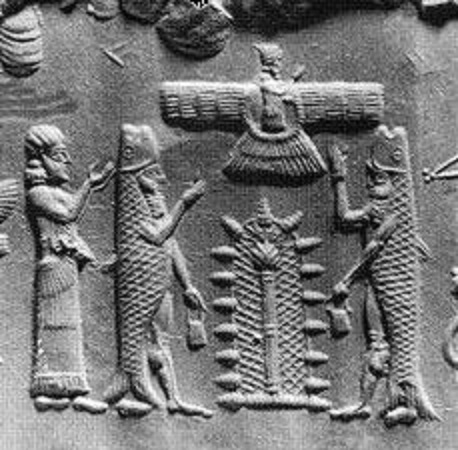
Back to Greek Mythology:
Nemesis was said to be the daughter of Oceanus,the primeval river-ocean that encircles the world.
In Greek mythology, this world-ocean Oceanus was personified as a Titan; In Greek mythology, the Titans (Greek: Τιτάν - Ti-tan; plural: Τιτᾶνες - Ti-tânes) were a race of powerful deities, descendants of Gaia and Uranus, that ruled during the legendary Golden Age.
Follow the breadcrumb trail...
In Greek mythology, the Titans (Greek: Τιτάν - Ti-tan; plural: Τιτᾶνες - Ti-tânes) were a race of powerful deities, descendants of Gaia and Uranus, that ruled during the legendary Golden Age. In the first generation of Titans, called the Twelve Titans, the males were Oceanus, Hyperion, Coeus, Cronus, Crius and Iapetus and the females were Mnemosyne, Tethys, Theia, Phoebe, Rhea and Themis.
Let's see what some of the names reference or mean historically:
- Gaia [Gaia (pronounced /ˈɡeɪ.ə/ or /ˈɡaɪ.ə/) "land" or "earth", from the Ancient Greek Γαῖα; also Gaea or Gea (Koine and Modern Greek Γῆ)[1] is the primalGreek goddess personifying the Earth, the Greek version of "Mother Nature". Gaia is a primordial deity in the Ancient Greek pantheon and considered aMother Goddess or Great Goddess].
Weird coincidence?... As an earth goddess in Sumerian mythology, Ki was the chief consort of Anu, the sky god. Cuneiform KI (Borger 2003 nr. 737; U+121A0 ) is the sign for "earth".
- Uranus (pronounced /ˈjʊərənəs, jʊˈreɪnəs/) is the Latinized form of Ouranos (Οὐρανός), the Greek word for sky (a cognate of the English word air). In Greek mythology Ouranos or Father Sky, is personified as the son and husband of Gaia, Mother Earth.
Was Uranus of Greek Mythology perhaps confused with a different historical planet?
In Sumerian mythology and later for Assyrians and Babylonians, Anu (also An; (from Sumerian *An = sky, heaven)) was a sky-god, the god of heaven, lord ofconstellations, king of gods, spirits and demons, and dwelt in the highest heavenly regions. It was believed that he had the power to judge those who had committed crimes, and that he had
created the stars as soldiers to destroy the wicked. His attribute was
the royal tiara, most times decorated with two pairs of bull horns.
Horns... was ANU the same dark star as Nemesis?
Sumerian Mythology: Though most scriptures depict Anu as a male, many scholars believe he was also a female, or a hermaphrodite. He could be connected with the Goddess Danu/Anu in Celtic civilizations.
Anu had several consorts, the foremost being Ki (earth), Nammu, and Uras. By Ki he was the father of, among others, the Annuna gods. By Nammu he was the father of, among others, Enki and Ningikuga. By Uras he was the father of Nin'insinna. According to legends, heaven and earth were once inseparable until An and Ki bore Enlil, god of the air, who cleaved heaven and earth in two.
An and Ki were, in some texts, identified as brother and sister being
the children of Anshar and Kishar. Ki later developed into the Akkadian goddess Antu.
Nammu is the Sumerian goddess of the primeval sea that gave birth to An (heaven) and Ki (earth) and the first gods. She was probably the first personification of the constellation which the Babylonians later called Tiamat and the Greeks called Cetus and represented the Apsu, the fresh water ocean which the Sumerians believed lay beneath the earth, the source of life-giving water and fertility in a country with
almost no rainfall.
- Oceanus, In classical antiquity, Oceanus (Greek: Ὠκεανός, lit. "ocean") was believed to be the world-ocean, which the ancient Romans and Greeksconsidered to be an enormous river encircling the world. Strictly speaking, Okeanos was the ocean-stream at the Equator in which floated the habitable hemisphere. Some scholars believe that Oceanus originally represented all bodies of salt water, including the Mediterranean Sea and the Atlantic Ocean, the two largest bodies known to the ancient Greeks.
-
Hyperion (Greek Ὑπερίων, "The High-One") was referred to in early mythological writings as Helios Hyperion (Ἥλιος Υπερίων), 'Sun High-one'. But in the Odyssey, Hesiod's Theogony and the Homeric Hymn to Demeter the Sun is once in each work called Hyperionides (περίδής) 'son of Hyperion', and Hesiod certainly imagines Hyperion as a separate being in other writings. Hyperion is the titan of light. In
later Ancient Greek literature, Hyperion is always distinguished from Helios
- the former was ascribed the characteristics of the 'God of
Watchfulness and Wisdom', while the latter became the physical
incarnation of the Sun. Hyperion plays virtually no role in Greek
culture and little role in mythology, save in lists of the twelve
Titans. Later Greeks intellectualized their myths:
"Of Hyperion we are told
that he was the first to understand,
by diligent attention and observation,
the movement of both the sun and the moon
and the other stars, and the seasons as well,
in that they are caused by these bodies,
and to make these facts known to others;
and that for this reason
he was called the father of these bodies,
since he had begotten, so to speak,
the speculation about them and their
nature." —
- Coeus (Ancient Greek: Κοῖος, Koios) was the Titan of Wisdom and Intellect, and his equivalent in Latin poetry—though he scarcely makes an appearance in Roman mythology—[1] was Polus, the embodiment of the celestial axis around which the heavens revolve.
Hmmm wonder why that's important? LOL
- Cronus or Kronos (Ancient Greek Κρόνος, Krónos) was the leader and the youngest of the first generation of Titans, divine descendants of Gaia, the earth, and Uranus, the sky. He overthrew his father and ruled during the mythological Golden Age, While the Greeks considered Cronus a force of chaos along with disorder, believing that the Olympian gods had brought an era of peace and order by seizing power from the crude and malicious Titans, the Romans took a more positive view of the deity by conflating their indigenous deity Saturn with Cronus. Consequently the Romans venerated Saturn much more than the Greeks did Cronus. In the Alexandrian andRenaissance periods, Cronus was conflated with the name of Chronos, the personification of "Father Time",[2] wielding the harvesting scythe. H. J. Rose, A Handbook of Greek Mythology,[3] observes that attempts to give Kronos a Greek etymology have failed. A theory debated in the 19th century...holds that Kronos is related to "horned", assuming a Semitic derivation from qrn/krn.[5] Robert Brown made the assertion in The Great Dionysiak Myth, 1877.[6]"Kronos signifies 'the Horned one'", the Rev. Alexander Hislop had previously asserted in The Two Babylons...with the note "From krn, a horn."]
(horned - like Nemesis/ Planet X with dust "wings"?)
- Crius, Kreios or Krios (Ancient Greek: Κρεῖος,[1] Κριός) was one of the Titans in the list given in Hesiod's Theogony, a son of Uranus and Gaia. The least individualized among them, etymology uncertain: traditionally considered a variation of κρῑός "ram."
- Iapetus, also Iapetos or Japetus (Greek: Ἰαπετός)("the Piercer") was a Titan, the son of Uranus and Gaia, and father (by an Oceanid named Clymene or Asia) of Atlas, Prometheus, Epimetheus, and Menoetius and through Prometheus, Epimetheus and Atlas an ancestor of the human race. He was the Titan of Mortal Life, while his son, Prometheus, was the creator of mankind.
- Mnemosyne' (Pronounced: Nee - Moss - See - Neen), hence the word "Mnemonic". Also spelled "Memnosyne" (Pronounced: "Mem - NO - seen), hence the word "Memory" and the name "Memnon" such as in "Memnon of Rhodes" "[1]". (Greek Mνημοσύνη, pronounced /nɪˈmɒzɪni/ or /nɪˈmɒsəni/) was the personification of memory in Greek mythology.
Did someone want us to remember something?
- Tethys (Greek Τηθύς), daughter of Uranus and Gaia[1] was an archaic Titaness and aquatic sea goddess, invoked in classical Greek poetry but no longer venerated in cult. Tethys was both sister and wife of Oceanus.[2] She was mother of the chief rivers of the world known to the Greeks, such as the Nile, theAlpheus, the Maeander, and about three thousand daughters called the Oceanids.[3] Considered as an embodiment of the waters of the world she also may be seen as a counterpart of Thalassa, the embodiment of the sea. In the Dumbarton Oaks mosaic, the bust of Tethys—surrounded by fishes—is rising, bare-shouldered from the waters. Against her shoulder rests a golden ship's rudder. Gray wings sprout from her forehead... Walter Burkert[4] notes the presence of Tethys in the episode of Iliad XIV that the Ancients called the "Deception of Zeus", where Hera, to mislead Zeus, says she wants to go to Oceanus, "origin of the gods" and Tethys "the mother". Burkert [5] sees in the name a transformation of Akkadian tiamtu or tâmtu, "the sea," which is recognizable in Tiamat.
In Babylonian mythology, Tiamat is a goddess who personifies the sea. Tiamat is considered the monstrous embodiment of primordial chaos. Although there are no early precedents for it, some sources identify her with images of a sea serpent or dragon. In the Enûma Elish, the Babylonian epic ofcreation, she gives birth to the first generation of deities; she later makes war upon them and is killed by the storm-god Marduk. The heavens and the earth are formed from her divided body.
HEY MARDUK IS ANOTHER NAME FOR NIBIRU!
Alternatively, Tethys may simply mean "old woman"; certainly it bears some similarity to ἡ τήθη, meaning "grandmother," and she is often portrayed as being extremely ancient (cf. Callimachus, Iamb 4.52, fr. 194). Of the power exercised by Tethys, one myth relates that the prominent goddess of the Olympians, Hera, was not pleased with the placement of Callisto and Arcas in the sky, as the constellations Ursa Major and Ursa Minor, so she asked her nurse, Tethys, to help. Tethys, a marine goddess, caused the constellations forever to circle the sky and never drop below the horizon, hence explaining why they are circumpolar. Robert Graves interprets the use of the term nurse in Classical myths as identifying deities who once were goddesses of central importance in the periods before historical documentation.
- Theia, goddess or divine, (sometimes written Thea or Thia), also called Euryphaessa, wide-shining, the far-shining one. Robert Graves relates[2] that in thePelasgian creation myth, she was the child of Eurynome—the creator called the goddess of all things—who created Theia as a Titaness ruling the sun.Hesiod's Theogony gives her an equally primal origin, a daughter of Gaia (Earth) and Uranos (Sky). In 42.a Graves also relates that later Theia is referred to as the cow-eyed Euryphaessa who gave birth to Helios, the sun.
Speaking of cows... back to Summerian Mythology - remember Anu had another consort namedUraš or Urash, she is the mother of the goddess Nininsinna. InSumerian mythology, Ninsun or Ninsuna ("lady wild cow", the "August cow", the "Wild Cow of the Enclosure", and "The Great Queen") is a goddess, best known as the mother of the legendary hero Gilgamesh. Could the cow somehow go back to Taurus of astrology?
- Phoebe (Greek: Φοίβη Phoibe; pronounced /ˈfiːbiː/ in English),"golden-wreathed," "Shining-one", feminine counterpart of the name Phoebus, She was traditionally associated with the moon.
-
Rhea, Rhea (pronounced /ˈriː.ə/; ancient Greek Ῥέα was the Titaness daughter of Uranus, the sky, and Gaia, the earth, in classical Greek mythology. She was known as "the mother of gods." Etymology: If Rhea is indeed Greek, most ancient etymologists derive Rhea ('Ρέα) by metathesis from έρα "ground",[4] but a tradition embodied in Plato[5] connected the word with ρείν, "flow".
Hmmm...flowing ground?!
-
Themis (Greek: Θέμις) is an ancient Greek goddess. She is described as "of good counsel", and is the embodiment of divine order, law, and custom. Themis means "law of nature" rather than human ordinance, literally "that which is put in place", from the verb τίθημι, títhēmi, "to put". To the ancient Greeks she was originally the organizer of the "communal affairs of humans, particularly assemblies". When Themis is disregarded, Nemesis brings just and wrathful retribution.
Creation mythology:
In the Olympian creation myth, as Hesiod tells it in Theogony, Uranus came every night to cover the earth and mate with Gaia, but he hated the children she bore him. Hesiod names the Titans, six sons and six daughters, the one-hundred-armed giants (Hecatonchires) and the one-eyed giants, the Cyclopes.
Uranus imprisoned Gaia's youngest children in Tartarus, within Earth, where they caused pain to Gaia. [Tartarus: In classic mythology, below Heaven, Earth, and Pontus [an ancient, pre-Olympian sea-god] is Tartarus, or Tartaros (Greek Τάρταρος, deep place). It is a deep, gloomy place, a pit, or an abyss used as a dungeon of torment and suffering that resides beneath the underworld.] (People hiding in caves?) She (Gaia) shaped a great flint-bladed sickle and asked her sons tocastrate Uranus. Only Cronus, youngest and most ambitious of the Titans, was willing: he ambushed his father and castrated him, casting the severed testicles into the sea.
Remember Anu, the Sumerian sky God... does this sound familiar?
In Hurrian mythology, Anu was the progenitor of all gods. His son Kumarbis bit off his genitals and spat out three deities, one of whom, Teshub, later deposed Kumarbis.
Back to Greek Mythology: From the blood (or, by a few accounts, semen) that spilled out from Uranus and fell upon the earth, the Gigantes, Erinyes, [In Greek mythology the Erinýes (Ἐρινύες, pl. of Ἐρινύς, Erinýs; literally "the angry ones") or Eumenídes (Εὐμενίδες, pl. of Εὐμενίς; literally "the gracious ones" but also translated as "Kind-hearted Ones" or "Kindly Ones") or Furies or Dirae in Roman mythology were female chthonic deities of vengeance or supernatural personifications of the anger of the dead. They represent regeneration and the potency of creation, which both consumes and empowers.] and Meliae produced. [the Meliae or Meliai (Ancient Greek: Μελίαι or Μελιάδες) were nymphs of the ash tree, whose name they shared. They appeared from the drops of blood spilled when Cronus castrated Uranus, according to Hesiod, Theogony 187. From the same blood sprang the Erinyes, suggesting that the ash-tree nymphs represented the Fates in milder guise (Graves 6.4). From the Meliae sprang the race of mankind of the Age of Bronze.]
(Could the sperm or blood symbolize meteorites or something falling on the earth and into the sea?)
The function of Uranus was as the vanquished god of an elder time, before real time began.
After his castration, the Sky came no more to cover the Earth at night, but held to its place, and "the original begetting came to an end" (Kerényi). Uranus was scarcely regarded as anthropomorphic, aside from the genitalia in the castration myth. He was simply the sky, which was conceived by the ancients as an overarching dome or roof of bronze, held in place (or turned on an axis) by the Titan Atlas.
Titanomachy
Main article: Titanomachy
Greeks of the classical age knew of several poems about the war between the gods and many of the Titans, the Titanomachy ("War of the Titans"). The dominant one, and the only one that has survived, was in the Theogony attributed to Hesiod. A lost epic Titanomachy attributed to the blind Thracian bard Thamyris, himself, was mentioned in passing in an essay On Music that was once attributed to Plutarch. The Titans also played a prominent role in the poems attributed toOrpheus. Although only scraps of the Orphic narratives survive, they show interesting differences with the Hesiodic tradition.
These Greek myths of the Titanomachy fall into a class of similar myths of a War in Heaven throughout Europe and the Near East, where one generation or group of gods largely opposes the dominant one. Sometimes the Elder Gods are supplanted. Sometimes the rebels lose, and are either cast out of power entirely or incorporated into the pantheon. Other examples might include the wars of the Æsir with the Vanir and Jotuns in Scandinavian mythology, the Babylonian epicEnuma Elish, the Hittite "Kingship in Heaven" narrative, the obscure generational conflict in Ugaritic fragments, and the rebellion of Lucifer in Christian tradition.
Cronus secured his power by re-imprisoning or refusing to free his siblings, the Hecatonchires and Cyclopes, and his (newly-created) siblings, the Giants, inTartarus. Afterwards, Cronus and his Titans lost the battle to his son Zeus.
Gaea, incensed by the imprisonment of the Titans in Tartarus by the Olympians, incited the Giants to rise up in arms against them, end their reign, and restore the Titans' rule. Led on by Alcyoneus and Porphyrion, they tested the strength of the Olympians in what is known as the Gigantomachia or Gigantomachy. The Giants Otus and Ephialtes hoped to reach the top of Mount Olympus by stacking the mountain ranges of Thessaly, Pelion, and Ossa, on top of each other.
The Olympians called upon the aid of Heracles after a prophecy warned them that he was required to defeat the Giants. Heracles slew not only Alcyoneus, but dealt the death blow to the Giants who had been wounded by the Olympians.
"Power is latent violence, which must have been manifested at least in some mythological once-upon-a-time. Superiority is guaranteed only by defeated inferiors," Walter Burkert remarked of the Gigantomachy.
This battle parallels the Titanomachy, a fierce struggle between the upstart Olympians and their older predecessors, the Titans (who lost the battle). In the Gigantomachy,
however, the Olympians were already in power when the Giants rose to
challenge them. With the aid of their powerful weapons and Heracles,
the Olympians defeated the Giants and quelled the rebellion, confirming
their reign over the earth, sea, and heaven, and confining the Giants
to the Netherworld.
Whether the Gigantomachy was interpreted in ancient times as a kind of indirect "revenge of the Titans" upon the Olympians — as the Giants' reign would have been in some fashion a restoration of the age of the
Titans — is not attested in any of the few literary references. Later Hellenistic poets and Latin ones tended to blur Titans and Giants.
If a person today said, "Titan," even now that gives the connotation of someone or something large. Out of confusion with the Gigantes, various large things have been named after the Titans, for their "titanic" size, for example the RMS Titanic or the giant predatory bird Titanis walleri.
According to the Greeks of southern Italy, the Giants were buried by the gods beneath the earth, where their writhing caused volcanic activity and earthquakes.
Following the fashions, originally developed in Hellenistic Alexandria, for rationalized glosses on the archaic myths and for allegorical interpretations, the fifth-century court poet of Honorius, Claudian, composed a Gigantomachia, that viewed Gigantomachy as a metaphor for catastrophic geomorphic change: "The puissant company of the giants confounds all differences between things; islands abandon the deep; mountains lie hidden in the sea. Many a river is left dry or has altered its ancient course....robbed of her mountains Earth sank into level plains, parted among her own sons."
Notice the references to earthquakes.
Were the Titans actually the Anunnaki of Babylonian lore?
The Anunnaki (also transcribed as: Anunna, Anunnaku, Ananaki and other variations) are a group of Sumerian, Akkadian and Babylonian deities. Meaning something to the effect of 'those of royal blood or 'princely offspring'. Their relation to the group of gods known as the Igigi is unclear - at times the names are used synonymously but in the Atra-hasis flood myth they have to work for the Anunnaki, rebelling after 40 days and
replaced by the creation of humans.
![]()
![]()
Disclaimer:
Some material presented will contain links, quotes, ideologies, etc., the contents of which should be understood to first, in their whole, reflect the views or opinions of their editors, and second, are used in my personal research as "fair use" sources only, and not espousement one way or the other. Researching for 'truth' leads one all over the place...a piece here, a piece there. As a researcher, I hunt, gather and disassemble resources, trying to put all the pieces into a coherent and logical whole. I encourage you to do the same. And please remember, these pages are only my effort to collect all the pieces I can find and see if they properly fit into the 'reality aggregate'.
Personal Position:
I've come to realize that 'truth' boils down to what we 'believe' the facts we've gathered point to. We only 'know' what we've 'experienced' firsthand. Everything else - what we read, what we watch, what we hear - is what someone else's gathered facts point to and 'they' 'believe' is 'truth', so that 'truth' seems to change in direct proportion to newly gathered facts divided by applied plausibility. Though I believe there is 'truth', until someone representing the celestial realm visibly appears and presents the heavenly records of Facts And Lies In The Order They Happened, I can't know for sure exactly what "the whole truth' on any given subject is, and what applies to me applies to everyone. Until then I'll continue to ask, "what does The Urantia Book say on the subject?"
~Gail Bird Allen
![]()
![]()

